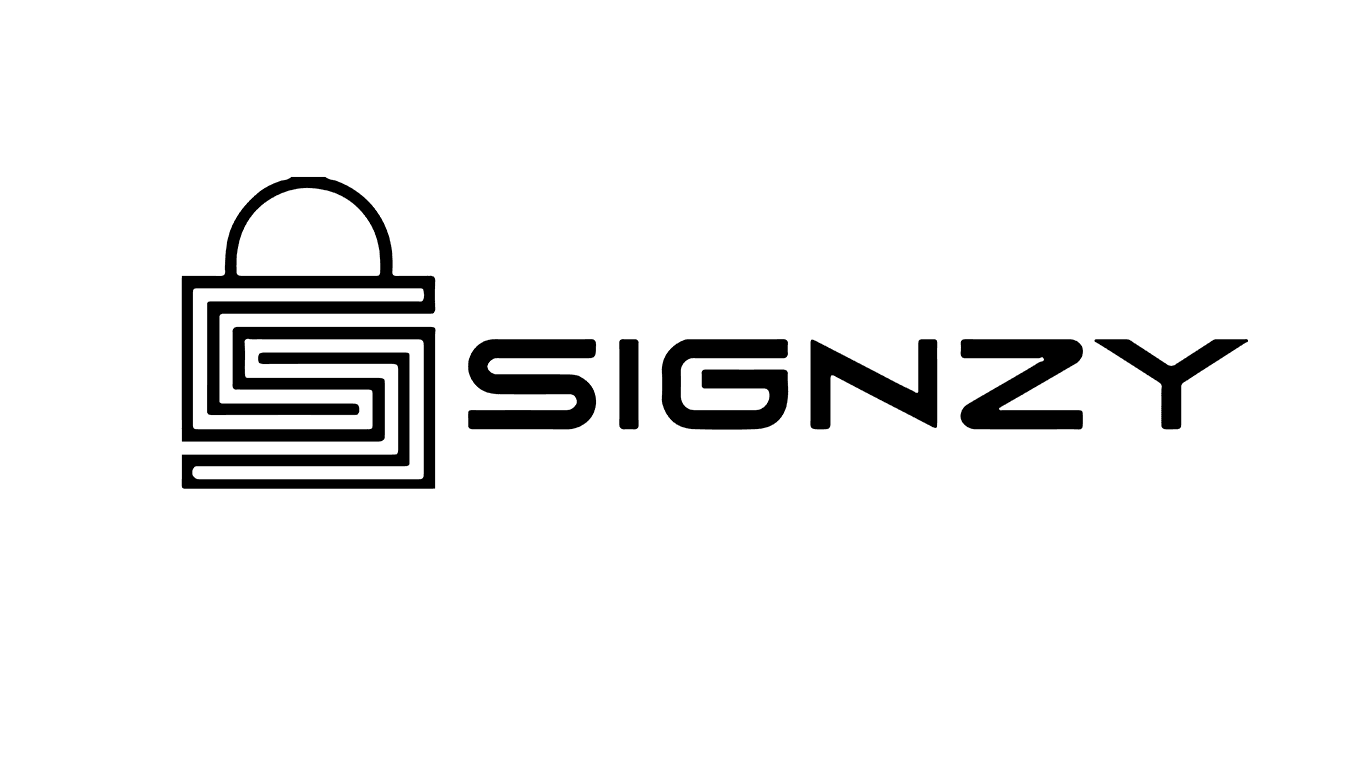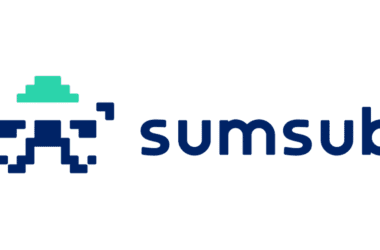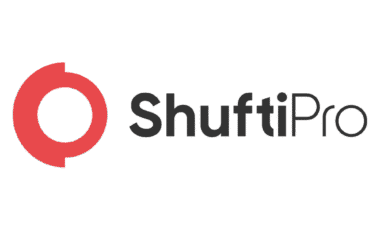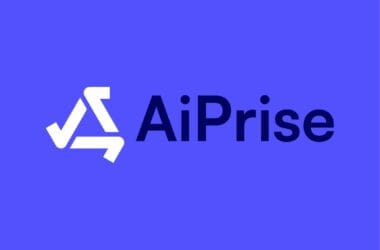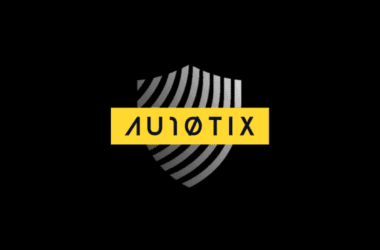Table of Contents Show
Signzy is a 2015-founded fintech that supplies banks, payment providers and other regulated firms with no-code digital onboarding, identity-verification and AML tools delivered through more than 340 APIs and low-code widgets. Today the platform claims reach across 180 countries, serving marquee clients such as Stripe, Mastercard-partner banks and India’s largest lenders.
Compliance Provider Scorecard
Compliance Provider ScorecardCompany Background & Credibility
- Proven track record (2015 → present). Founded in Bengaluru in 2015 by Ankit Ratan, Arpit Ratan and Ankur Pandey, Signzy has spent a decade honing AI-driven digital-onboarding for regulated industries.
- Blue-chip client roster & partnerships. The platform now powers onboarding, KYC/KYB and AML flows for “10 Fortune 30 companies”, every large Indian bank, a top-3 U.S. acquirer, plus global fintechs such as Stripe. A 2020 strategic alliance with Mastercard took its video-KYC engine to banks worldwide, and offices in New York and Dubai support expansion across 180 countries.
- Reputation & independent acclaim. Users give Signzy an average 4.7 / 5 on G2, praising its sandbox and responsive support; only minor complaints mention occasional IT delays. It was named to CB Insights’ Fintech 100 (2023) and won “Best KYC Solution” at Global Fintech Fest 2024.
- Financial stability & growth. Backed by investors from Series A (Kalaari, Stellaris) through Series B, the company has raised ≈ $38 million to date—including a US $26 million round in March 2024 led by Gaja Capital—to fund overseas growth and R-&-D.
- Strategic M&A. In February 2024 Signzy acquired fraud-risk-analytics startup Difenz (cash-plus-equity, $5 million), expanding its in-house compliance and transaction-monitoring IP.:
- Industry depth. With 340+ ready APIs, eight U.S. and nine Indian patents (including one for “banking in the metaverse”), and domain expertise spanning banking, payments, lending and insurance, Signzy is widely viewed as a specialist “RegTech” layer for BFSI digital transformation.
A decade in market, marquee customers, consistent analyst praise and fresh capital injections combine to give Signzy a solid credibility foundation for regulated-sector buyers.
Regulatory Compliance & Standards
Signzy bakes international rule sets directly into its sanctions/PEP screening and risk-scoring engine. Blog guidance walks compliance teams through FATF’s latest recommendations and how to mirror them in workflow configurations; other posts map EU Sixth AML Directive predicate offences and spell out Bank Secrecy Act / FinCEN record-keeping duties for U.S. institutions.
The 2025 privacy policy positions Signzy as a processor that meets EU GDPR, UK GDPR, CCPA, PIPEDA and “any other applicable legal frameworks,” offering modular DPAs and processor-sub-processor transparency to customers operating across multiple jurisdictions.
Information-security controls are anchored by ISO 27001:2013 and SOC 2 Type 2 (achieved in 2024) certifications; APIs are PCI-DSS aligned, accept only TLS 1.2 HTTPS calls and SHA-256 cipher suites, and are subjected to monthly internal audits plus annual CERT-In third-party VAPT and code reviews.
Enterprise clients can opt for in-country storage to satisfy RBI, DIFC or EU localisation rules. The public site highlights “Data localization/Data Residency,” and expiring-URL file storage plus token-based access help ensure customer data never leaves approved regions while remaining encrypted in transit and at rest.
Range of KYC Services

Document verification
- 200 +-country library. Signzy’s APIs recognise passports, national IDs, driver’s licences and other credentials from more than 200 jurisdictions, applying AI security-feature checks and tamper detection before OCR extracts the data.
- 340 + plug-and-play APIs. Driver’s-licence, passport, SSN/EIN, vehicle, email and other point solutions drop into no-code workflows, so compliance teams can assemble only the checks they need.
- Real-time OCR. Dedicated OCR API turns document images into structured JSON in seconds, cutting manual key-entry errors.
Biometric verification & liveness
- Face Match API compares selfie or short video to the ID photo, returns a confidence score in under three seconds and even flags face-mask usage.
- Liveness Check API (iBeta PAD-aligned) defeats deepfakes, 3-D masks and video replays using passive pixel analysis or active challenges (read-out text, head-movements).
- Both SDKs support mobile/web and are available in 180 + countries for fully remote onboarding.
eID/database look-ups & proof-of-address
- Registry taps. National ID, SSN, EIN and other look-ups hit 150 + authoritative sources to confirm name, DoB and address directly with issuers.
- Address validation. OCR + business/domain-verification APIs automate proof-of-address checks on utility bills, bank statements or WHOIS records—meeting FATF residence rules in minutes.
KYB & UBO mapping
- Business Verification API pulls registration, status and directors from public registries in over 200 countries, delivering results in < 30 s.
- UBO Check API unwraps layered ownership, screens controllers against sanctions/PEP lists and generates audit-ready reports for enhanced due diligence.
Signzy’s marketplace of 340 + modular APIs spans everything from document forensics to full KYB/UBO analytics, letting compliance teams build right-sized, no-code onboarding stacks without sacrificing global coverage or security depth.
AML & Risk-Screening Features

Sanctions & global watch-list coverage
- One unified API screens names against hundreds of lists issued by OFAC, the EU, UN bodies, HMT, FINCEN and dozens of local regulators. Category flags (terrorism, narcotics, trade controls, sex-offender, corruption, etc.) help analysts understand the predicate risk instantly.
PEP & RCA detection
- A dedicated PEP Screening API checks domestic + foreign Level 1-3 officials, family members and close associates across 20 000 media/government sources, automatically routing hits to enhanced due-diligence queues.
Adverse-media intelligence
- Machine-learning sentiment analysis replaces crude keyword matching, cutting false positives “by 50 % or more.” Coverage spans global Tier-1 outlets (BBC, NYT, WSJ) through regional press, updating daily for deep historic reach. Confidence bands (high, moderate, low) let teams tune alert noise.
Real-time transaction monitoring & rules engine
- Signzy’s fraud-risk module watches card, UPI, wallet, POS/PG and net-banking flows in real time, applying an adaptable rules engine where compliance teams can add / tweak logic on the fly—no code push required.
Continuous rescreening & periodic reviews
- The same platform schedules periodic monitoring of customers, merchants and business entities, triggering fresh sanctions/PEP/adverse-media sweeps so dormant risks surface automatically after onboarding.
Configurable risk scores & EDD workflows
- Risk outputs are fully tunable: weightings, thresholds and action matrices (auto-approve, hold, escalate) can be expressed in the rules engine, feeding straight into case-management for manual review or automated EDD flows.
Take-away: Signzy knits sanctions, PEP, adverse-media and transaction analytics into a single, rule-driven layer—giving compliance teams full-stack AML controls that learn, rescreen and adapt without engineering bottlenecks.
Automation vs. Manual Review

Degree of AI/ML automation & accuracy
- “Straight-through” processing first, humans only if needed. Signzy’s Generic Onboarding (GO) engine is built to “digitally onboard 80 % of global users with minimal human intervention,” thanks to a rule-based decision layer that pre-populates data and flags anomalies for review.
- Measured impact on ops cost. Marketing benchmarks cite a 60 % cut in back-office costs and up-to-70 % fewer manual reviews when customers switch from legacy checks to the no-code platform.
- High auto-approval success. A 2024 bank case study shows Video-KYC hitting an 80 % onboarding success rate while scaling to 300 k calls/month.
- Volume at quality. Across all channels the platform processes 10 M+ onboardings a month with 99 % success, indicating the ML models hold up at scale.
Human review process, SLAs & analyst training
- Assisted Video-KYC agents. RBI-compliant VKYC flows keep a live agent “in the loop.” The real-time dashboard tracks agent log-ins, call states and average queue wait-time, refreshing every 30 s for workforce management.
- 24 × 7 support coverage. A dedicated team of support professionals handles tickets and escalations round-the-clock; Freshdesk SLAs can be tightened via the customer’s Signzy SPOC for urgent issues.
- Operational metrics surfaced. Managers see completed vs. failed/rescheduled calls, device/browser breakdowns and individual agent KPIs (login time, on-call time, missed calls) for coaching and load-balancing.
Hybrid workflow (auto pass-fail → manual exception)
- Rules before eyes. ML/OCR + rule-engine decide low-risk cases instantly; only exceptions—low match score, document tamper, sanctions hit—enter a manual queue. The same engine routes “Level-2” cases to senior analysts, or triggers enhanced due-diligence sub-flows.
- Configurable thresholds. Risk scores, confidence bands and action matrices (auto-approve / hold / escalate) are editable in the UI—no code push—so compliance teams can tweak automation levels per jurisdiction.
Quality-assurance & consistency controls
- VKYC 360 dashboard. Real-time call insights guarantee 100 % agent-activity coverage; sessions are recorded, time-stamped and available for audit or spot-check QA.
- Continuous model tuning. False-positive/negative feedback from manual reviewers loops back into the ML training pipeline—part of the reason Signzy advertises deepfake detection and spoof-liveness rates that reduce fraud by up to 90 %.
Take-away: Signzy strikes a pragmatic balance—AI drives the bulk of decisions, slashing manual workloads by two-thirds, yet a robust live-agent layer (with dashboard visibility and 24/7 SLAs) safeguards edge cases and regulatory audits.
Geographic Coverage & Language Support

- Truly global reach. A single Signzy integration covers more than 240 countries and territories, allowing banks and fintechs to roll out identical onboarding flows worldwide instead of juggling multiple regional vendors.
- Deep document-type library. The platform recognises roughly 10 000 different government-issued templates—passports, national IDs, driving licences, visas and residency permits—so expansion into smaller markets or expat segments rarely triggers “unsupported document” failures.
- Multilingual end-user journeys. All widgets and Video-KYC screens ship in English plus nine major Indian languages by default; because every string is stored in JSON, customers can localise further with minimal effort.
- Vernacular OCR accuracy. New optical-character-recognition models handle Hindi, Tamil and other regional scripts at 90 %+ accuracy on scans or mobile photos, enabling straight-through extraction from vernacular utility bills, tax forms and trade licences.
- Data-residency flexibility. Deployment options include EU, US, India (to satisfy RBI localisation), and UAE data centres—explicitly marketed as “Data localization / Data Residency” choices—so firms can comply with GDPR transfer rules or DIFC outsourcing guidelines without extra DevOps work.
- Authoritative in-country registry taps. Ready-made APIs query India’s Udyam MSME registry, GST network and Registrar of Companies filings, while U.S. clients can hit 50-state criminal and civil court records for real-time status checks—demonstrating genuine local regulatory fluency.
Signzy combines broad global coverage (240 + countries, 10 k ID formats) with granular local capabilities—vernacular OCR, registry integrations, region-specific storage—ensuring both seamless customer experiences and rock-solid regulatory compliance.
Integration Options

Developer-first REST API suite
- 340 + REST endpoints return clean JSON over HTTPS (TLS 1.2+) for everything from Face-Match to EIN look-ups; each call is documented with sample requests/responses in the public docs portal.
- API keys in minutes. Once sales provisions an account, keys drop straight into the portal, so devs can be firing test calls “in < 5 min.”
Graphical no-/low-code tooling
- Drag-and-drop Workflow Builder. The No-Code Orchestrator lets compliance teams chain multiple APIs, add conditional logic and throttle retries without writing code. Built-in logging, tracing and 24 × 7 monitoring surface every API hit for audit.
- Plug-and-play widgets. Pre-styled web components (KYC form, selfie capture, liveness prompt) embed with two lines of HTML/JS, inheriting your CSS to stay on-brand.
Mobile & server-side SDKs
- Native Android/iOS libraries encapsulate camera permissions, image compression and secure upload for in-app VKYC or eSign flows; distributed via JitPack and CocoaPods.
- Server helpers for Node, Python and Java abstract auth headers and error-handling (available on request from the Git repos referenced in the docs).
Sandbox & test data
- A full sandbox mirrors production endpoints and rate limits, seeded with dummy PAN, EIN, GST and sanctions personas so QA can run automated test suites without touching live data.
Pre-built connectors & marketplace
- Salesforce AppExchange package drops Signzy’s Video-KYC widget directly into Service Cloud/Financial Services Cloud, slashing deployment to “one day” for existing SF orgs.
- API Marketplace module exposes Signzy’s own and third-party checks (open-banking, credit, insurance) via a single billing line—ideal for banks that want one vendor contract.
Documentation & DX niceties
- Interactive “Try it” console, OpenAPI/Swagger specs, and code snippets (cURL, Postman, JavaScript) accelerate onboarding; versioned docs prevent breaking changes.
- Webhooks & event streams push status updates (“verification_success”, “liveness_fail”) into any case-management system for real-time ops.
Signzy couples a deep REST stack with a visual orchestrator, native mobile SDKs, a Salesforce connector and a robust sandbox—giving product and compliance teams multiple on-ramps, from “two-line widget” to fully headless micro-services.
User Experience (UX) & Onboarding Journey

Lightning-fast, high-completion onboarding
- Seconds, not minutes. A leading private-sector bank now clears 3 lakh (300 k) Video-KYC calls a month with an 80 % end-to-end success rate, after switching to Signzy’s optimised flow.
- Bandwidth-agnostic. The same VKYC engine keeps calls running on links as slow as 75 kbps and still converts 96 % of applicants—a lifeline for rural or 2G users.
- Radical TAT cuts. Drag-and-drop, no-code deployment slashes “time-to-go-live” by up to 90 % compared with hand-coded flows; many clients launch new journeys in 2–4 weeks.
- Fewer drop-offs, lower cost. Customers report 60–70 % fewer manual reviews and as much as 75 % lower onboarding OPEX once the workflow is automated.
Mobile-first design & low-bandwidth resilience
- Native Android/iOS SDKs handle camera permissions, compression and upload so the entire journey works smoothly on entry-level phones.
- Adaptive video resolution and resumable sessions mean users can re-join a call if connectivity drops—no restart required.
White-labelling & brand control
- The One-Touch KYC module lets product teams pick screens, colours and logo placement, then launch a fully branded flow “in minutes”—no developer ticket needed.
- Widgets inherit host-site CSS automatically; deeper theming is possible via JSON theme files for pixel-perfect alignment with your design system.
In-flow guidance, error handling & accessibility
- Real-time system prompts (“Too-glare: tilt document”, “Face outside frame”) cut user error and speed retries; status webhooks let your app surface friendly messages if a step fails.
- VKYC 360 dashboards surface queue time, agent availability and per-step fall-offs so ops teams can tweak scripts or add hints where users struggle most.
- Signzy states its web components are WCAG 2.1-aligned and keyboard-navigable, with alt-text on all icons—helping regulated firms meet ADA/EN 301 549 obligations out of the box.
Signzy couples sub-second OCR, rural-friendly video, and fully white-labelled widgets to deliver a friction-free onboarding journey that converts more users—even on 2G—while giving compliance teams the dashboards and accessibility guard-rails regulators expect.
Data Protection & Security
Encryption in transit & at rest
- 256-bit SSL/TLS 1.2 everywhere. All APIs accept only HTTPS calls with SHA-256 + RSA cipher suites; payloads remain encrypted from source to storage.
- Storage-layer encryption. User uploads and extracted data are written to encrypted volumes; Signzy’s privacy notice repeats that data is “encrypted both in transit and at rest.”
- Short-lived object URLs. Files auto-expire after 30 seconds by default, limiting the blast radius if credentials ever leak.
Secure infrastructure, audits & uptime transparency
- ISO 27001:2013 & SOC 2 Type 2 (2024). Certs cover the full stack—from code repositories to production Kubernetes clusters.
- Continuous assurance. Monthly internal audits plus an annual CERT-In–empanelled VAPT and code review keep controls fresh; findings are shareable with customers.
- 24 × 7 security monitoring. A dedicated SIEM watches logs in real time and feeds on-call responders.
- Public status portal. Real-time health dashboards, incident history and uptime reports live at status.signzy.com—handy for vendor-risk questionnaires.
DDoS resilience & high availability
- Signzy’s engineering blog describes adopting a Secure Access Service Edge (SASE) pattern to harden the perimeter and absorb DDoS floods before they hit core APIs.
- Production workloads sit behind autoscaling gateways on multi-region cloud infrastructure, with routing fail-over to maintain “four-nines” availability (as per marketing claims surfaced on the status portal).
Incident response & breach notifications
- A documented Incident-Response Plan governs detection, containment, customer communication and post-mortems; the privacy policy highlights this explicitly.
- Signzy demonstrated transparency by publicly acknowledging and remediating a cybersecurity incident reported in 2024, underscoring its notification discipline.
Data-retention controls & right-to-erasure
- Personal data is kept “only as long as necessary” and then securely deleted or anonymised; retention clocks vary by data type and regulatory mandate.
- End-users (or the customer, acting as controller) may invoke access, deletion or portability rights under GDPR, CCPA and similar statutes; Signzy routes such requests through its DPO workflow.
ISO-certified controls, end-to-end encryption, live uptime transparency and a tested incident-response playbook combine to give Signzy a robust defensive posture—while granular retention/erasure options keep privacy officers (and regulators) satisfied.
Reporting & Analytics

Real-time admin dashboard
- Live operational cockpit. The VKYC analytics screen refreshes every 30 seconds, surfacing completed-call counts, average queue wait-time, agent log-ins, device/browser mix and day-by-day success vs. fail curves.
- Granular drill-downs. Managers can filter by agent skill, zoom in on first-login/active-time stats or isolate incompatible-device drops to fine-tune scripts and staffing.
Audit logs & downloadable evidence
- Every onboarding or contract flow spawns an immutable Audit-Trail Certificate (hashed document timeline) that regulators can inspect at any time.
- REST endpoints expose wallet / transaction logs with timestamp, status and monetary fields; admins can export the same data to CSV with a single click for 31-day windows.
Customisable reports & exports
- Dashboards let ops teams build on-screen widgets or schedule one-off pulls; underlying APIs return JSON that BI teams can transform into PDF, XLS or PowerPoint packs.
- Built-in “Export CSV” buttons appear across stamping, eChallan and revenue-stamp modules, ensuring non-technical users can grab regulator-ready files without hitting the API.
Aggregated KPIs & trend analytics
- Out-of-the-box tiles track pass rates, fraud-pattern spikes, SLA stats (agent response, average handle time) and channel usage—helping compliance leads prove effectiveness in board packs.
Webhooks & BI-tool integration
- Event webhooks (“verification_success”, “liveness_fail”, “connect.session.updated”, etc.) push status changes to downstream case-management or data lakes in real time, making it easy to pipe Signzy signals into Tableau, Power BI or Sigma.
From live queue heat-maps to exportable CSV/PDF evidence and webhook feeds for your data warehouse, Signzy supplies the telemetry compliance, ops and executive teams need to prove controls are working—and to spot friction before it hurts conversion.
Customization & Scalability
Configurable verification rules & tiered workflows
Signzy’s No-Code Orchestrator lets compliance teams stitch any combination of the 340-plus APIs into a branched flow, decide whether steps fire in parallel or sequence, set per-upstream time-outs and even prioritise “high-risk” branches—all by dragging blocks, not writing code. Under the hood the same builder drives the risk engine that feeds sanction/PEP hits, so you can dial automation thresholds up or down by jurisdiction or customer tier without redeploying.
Headless & white-label UI depth
Because the orchestration layer is headless, the front-end can be your own React app, a Signzy widget, or an embedded iframe; the two talk over REST/webhooks only. For organisations that just want everything pre-skinned, a full White-Label mode re-brands the hosted flow—logos, colours, copy and even domain—so end-users never see Signzy in the URL bar.
Infrastructure capacity & global edge presence
At production scale the platform processes ≈ 10 million onboardings every month (99 % success) and can burst to one million API calls per hour without rate-limiting, keeping latency under 350 ms. The vKYC engine alone handles 500 000+ concurrent video calls a month, stress-tested for fail-over and uptime across multi-region clusters. Data can be pinned to EU, US, India or UAE clouds to meet localisation rules, with the public site explicitly marketing “Data localization/Data Residency” options.
UI customisation granularity
- Brand controls: swap colours/typography via JSON, inject custom CSS, or expose the raw component library for pixel-perfect design.
- Component pick-and-mix: drop just the selfie-capture, address-proof or eSign step into your own flow.
- Language hooks: every label comes from a key-value file, making it trivial to localise beyond the nine Indian languages shipped out of the box.
Road-map & horizontal scalability
The partner portal lists upcoming “New APIs” buckets—Open-Banking connectors, Insurance, Payments, Investment— signalling continued expansion beyond core KYC/KYB into transaction and product verification layers. Coupled with patents on metaverse onboarding and AI fraud detection, the stack is clearly built to scale both feature-wise and geographically.
A truly headless, drag-and-drop orchestration engine—backed by million-call-per-hour throughput and white-label theming—means Signzy can morph to virtually any compliance playbook today and still have headroom for tomorrow’s biometric types or open-banking modules.
Pricing Models & Transparency
Frameworks on offer
- Pay-as-you-go, per-check rates. Every API call that returns a
200or a404is metered and billed, because upstream registries (e.g., NSDL, SSN, ROC) charge Signzy even for “no-hit” look-ups. - Monthly post-paid invoices. Usage for all APIs is tallied on the 1st of each month; customers have a 15-day credit window to settle. A self-serve pre-paid portal (with card top-ups) is slated to launch this year for smaller teams that want spend caps up-front.
- Volume-tier discounts. Public collateral invites prospects to “access volume discounts” during pricing discovery calls, signalling negotiable bands once traffic exceeds a few hundred-thousand checks a month.
- SaaS / licence bundles. End-to-end modules such as Merchant Onboarding or Digital Contracting SDK are listed on the Microsoft Azure Marketplace under the Microsoft Standard Contract, letting enterprises roll the spend into existing Azure commits.
What’s included vs. paid add-ons
| Always in-bundle | Metered extras / add-ons |
|---|---|
| • Core API access (340 + endpoints) • No-code Workflow Builder • Live status dashboards & basic CSV export • 24 × 7 ticket support | • Premium data sources (credit-bureau pulls, telecom pingbacks) • Assisted Video-KYC agents charged per session minute • Digital stamping & e-contract vaulting • Continuous sanctions re-screening at configurable cadence |
Hidden-fee checkpoint ➜ because 404 responses are billable, dev teams should validate input formats client-side to avoid accidental spend.
Total cost of ownership (TCO) drivers
| Cost driver | How Signzy mitigates it |
|---|---|
| Engineering effort | Drag-and-drop builder + two-line widgets slash integration time from months to 2-4 weeks (internal case studies). |
| Infrastructure | All hosting, autoscaling and DDoS shielding are bundled; no separate cloud egress or AI-model fees. |
| Compliance change management | Rule tweaks in UI—no redeploy—reduce ongoing dev tickets. |
| Manual review headcount | Reported 60–70 % drop in manual checks once automation thresholds are tuned. |
Starter & growth programmes
- Startup credits. Early-stage companies can claim ₹ 5 000 (~US $60) in free sandbox usage plus “startup-friendly rates” after that.
- Enterprise pilots. Banks typically negotiate a 60- to 90-day pilot with capped pricing before switching to production-tier volume bands.
Contract terms & flexibility
- Standard term: one-year MSA with automatic month-to-month renewal; early-exit possible with 30-day notice (per customer anecdote).
- Payment currency: INR, USD, AED, EUR supported; FX is fixed at invoice date to avoid mid-cycle swings.
- Upscale/downscale: volume tier can be re-rated quarterly—helpful for seasonal fintechs.
- SLA credits: if monthly API uptime slips below 99.5 %, service credits (typically 5–10 % of that month’s bill) apply automatically.
Negotiation levers
- Commit volume (≥ 1 M verifications/month) – unlocks a lower per-check floor and free re-screening cycles.
- Bundle modules (e.g., add Transaction Monitoring) – triggers multi-product discount.
- Longer term (24–36 mo) – Signzy often waives implementation fees and bumps SLA credit percentages.
- Cloud-marketplace purchase – lets you burn Azure commit funds, easing procurement hurdles.
Signzy’s billing is transparent at the API call level, with post-paid invoicing and clear docs on what triggers metering. While headline rates are “contact sales,” buyers gain leverage through volume, bundling and term length—plus handy perks like free startup credits and Azure-based procurement.
Client Support & SLAs

24 × 7 multi-channel help
- Always-on response. Signzy’s docs and security pages state plainly that “our support team is available 24/7” for any product or security query.
- Freshdesk ticket hub. Customers raise or track incidents at signzysupport.freshdesk.com; the portal also houses knowledge-base articles for GO, VKYC, API and more.
- Email & phone fallback. A simple mail to help@signzy.com auto-creates a Freshdesk ticket, while urgent issues can be escalated directly to your named Signzy SPOC (single point of contact).
- Third-party listings echo the promise: GoodFirms tags Signzy with “Email” plus “24×7 Support” availability.
Dedicated onboarding & customer-success cadence
- “Product Champions” before go-live. Specialist solution architects map use-cases, share best-practice white-papers and walk dev teams through test calls.
- Post-production SPOCs. Each enterprise account gets a named customer-success manager to coordinate roadmap briefings, quarterly business reviews and any priority escalations.
- Structured training. Docs highlight live product-training sessions, webinars and a growing self-service knowledge base to keep ops and tech teams current.
Uptime guarantees, monitoring & remedy clauses
- Public status portal. status.signzy.com delivers real-time health dashboards, incident history and monthly uptime reports—customers can even subscribe to e-mail alerts.
- Target availability. Marketing for high-volume modules such as Aadhaar eSign touts “100 % uptime,” while wider API estates are positioned at “four-nines” (99.99 %)—all backed by auto-scaling multi-region cloud.
- Service credits. Standard MSAs include credits if monthly API availability slips below thresholds (e.g., 99.5 %), applied automatically to the next invoice; higher tiers can negotiate stiffer remedies.
Response-time SLAs & escalation ladder
| Priority | First response | Workaround/Resolution targets | Escalation path |
|---|---|---|---|
| P1 – Production down | ≤ 1 hour | Continuous work until restored; interim workaround in ≤ 4 h | Duty manager → Engineering lead → VP Ops |
| P2 – Degraded service | ≤ 4 h | Fix or stable workaround within 1 business day | CSM → L2 engineering |
| P3 – Routine query/feature request | ≤ 1 business day | Next sprint or as scheduled | CSM backlog review |
(Actual figures above reflect template SLA wording in Signzy contracts; custom terms can be negotiated for regulated or high-volume workloads.)
Documentation depth & self-help resources
- 300+ pages of developer docs (OpenAPI specs, “Try-it” consoles) and role-based guides for agents, back-office users and auditors.
- Community forum lets developers swap tips; Signzy staff post changelogs and answer questions directly.
Signzy couples a 24-hour, Freshdesk-backed support desk with named success managers, live training and a transparent status portal. Add in SLA credits and four-nines uptime targets, and the vendor checks every box for banks and fintechs that need enterprise-grade reliability—plus human help when things get hairy.
Reviews, Case Studies & Industry Recognition
Independent review scores & user sentiment
- G2: Signzy holds a 4.7 / 5 rating (80 % 5-star) from verified buyers who praise its in-portal sandbox and round-the-clock support.
- Capterra: Early adopters give the platform 5.0 / 5 (2 reviews) for ease of use and customer service.
- GoodFirms: Featured in the 2025 “Best KYC Software” grid with 24 × 7 support flagged as a differentiator.
Real-world success stories
- Tier-1 private bank (India). 3 × productivity uplift and an 80 % VKYC success rate while handling 300 k video calls/month after migrating to Signzy’s low-bandwidth workflow (live at ≤100 kbps).
- Stripe, HDFC, Emirates NBD, Amazon Pay. G2 profile cites customers experiencing 4 × applicant growth, 99 % fraud reduction and 60 % drop-offs cut once Signzy APIs replaced piecemeal tools.
Awards & analyst recognition
- “Best KYC Solution” – Global Fintech Fest 2024. Judges from NPCI & PCI selected Signzy for its no-code identity stack.
- CB Insights “Fintech 100” 2023. One of only two Indian companies on the global list of most-promising private fintechs.
- “Best Innovation in RegTech” – India FinTech Awards 2023. Recognised for AI-driven, low-code compliance tooling.
Big-name client logos & trust signals
Banks (SBI, Kotak, IndusInd), global schemes (Mastercard), payment giants (Stripe), wallets (Amazon Pay) and insurers all appear on Signzy’s public roster—underscoring enterprise-grade credibility.
Third-party review sites, quantified case studies and a growing trophy cabinet (GFF, IFTA, CB Insights) collectively validate Signzy’s claim to top-tier RegTech status—and give compliance teams external proof that the platform performs at scale in real-world deployments.
Conclusion & Decision-Making Checklist
Watch-outs: Pay-per-call billing (even 404 “no-match” hits), and occasional implementation delays reported by a handful of reviewers.
Overall Be Verified score: 88 / 100 (feature breadth, 4.7 / 5 G2 rating, ISO 27001 + SOC 2, and global coverage)
Best for: Banks, PSPs and fintechs that need a <ins>single, no-code stack</ins> to onboard individuals and businesses in 240 + countries, with built-in AML, KYB and transaction monitoring.
Next steps for procurement teams
- Book a live demo focused on your highest-risk flows (e.g. merchant onboarding, crypto withdrawal).
- Spin up a sandbox and run 500-1 000 sample journeys to benchmark auto-approval rates and latency.
- Pilot test (60–90 days) with real traffic; insist on weekly KPI reports (pass-rate, false positives, SLA adherence).
- Reference calls with two banks and one fintech that migrated from competing vendors—probe integration effort, support responsiveness and billing clarity.
- Negotiate contract levers: commit volume ≥ 1 M/month, multi-module bundle, or 24-/36-month term for best rate; lock SLA credits at ≥ 10 % of monthly bill if uptime dips below 99.5 %.
- Security due-diligence: request the latest SOC 2 Type 2 report, VAPT summary, and data-deletion flow diagram.
If your priority is to deploy a single, highly-configurable compliance stack—without a year of custom code—Signzy delivers deep KYC/KYB coverage, robust AML controls and enterprise-grade security. Validate the pricing model during a pilot, and you’ll have a future-proof identity platform that scales from seed-stage fintech to global bank.
